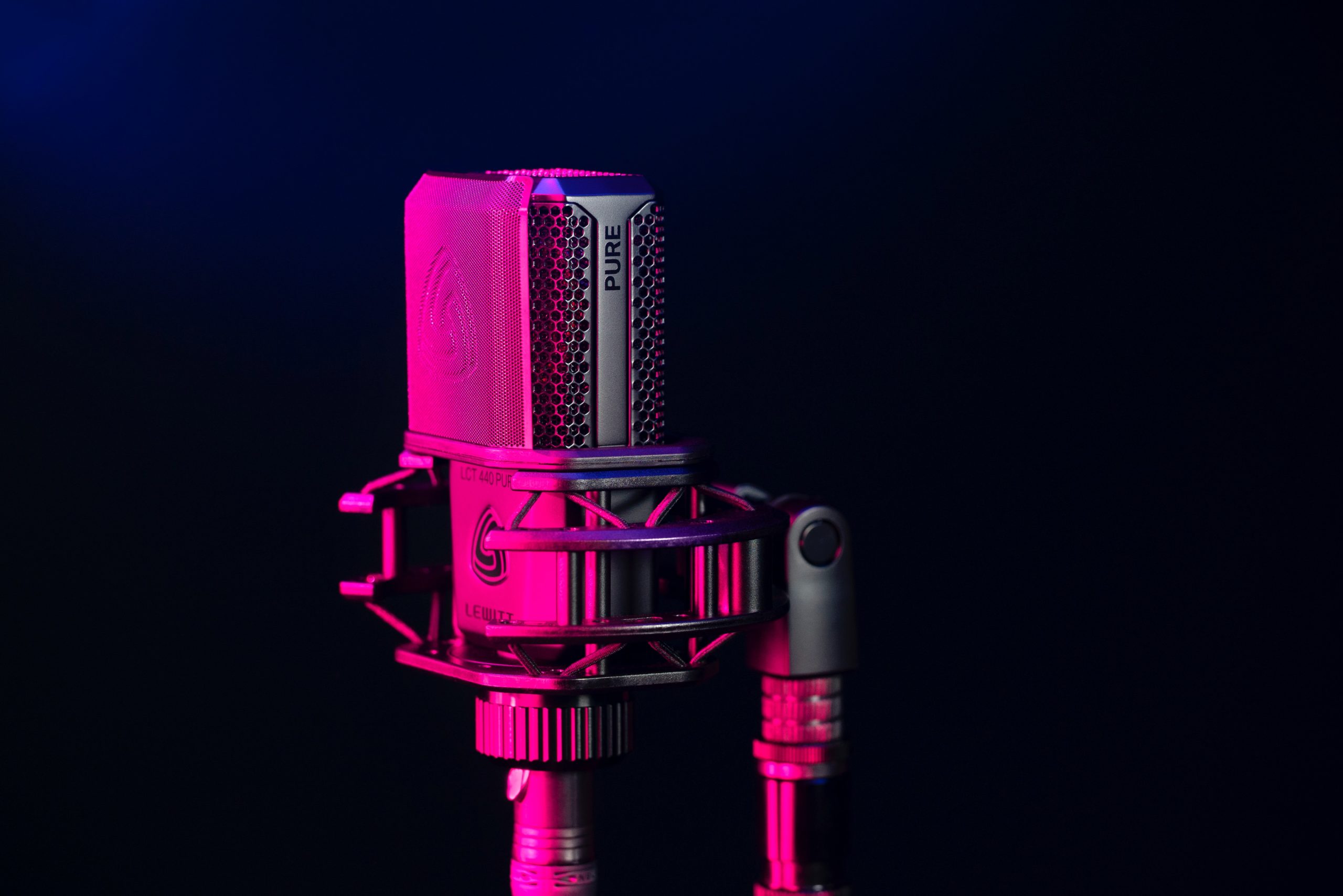Best budget condenser microphones in India 2021
If you’ve ever recorded a vocal, a guitar or a bass part in your home studio, chances are you have used a condenser microphone. Condenser microphones are the industry standard for recording vocals and acoustic instruments due to their versatility and natural sound qualities. They are a critical piece of equipment for vocalists, podcast hosts, and anyone else who needs to make a high-quality audio recording.
They’re also an incredibly crucial part of any recording studio. Condenser mics can pick up sounds from greater distances than dynamic mics, which makes them perfect for picking up sound from vocals and instruments during live performances. There are many brands of condenser microphones available online and offline, but not all of them meet the standards expected by professionals. In this article we will take a look at the best condenser microphones in India that you can use in any home or professional recording environment!
Condenser or dynamic microphone: Which one should you buy?
When it comes to live or studio performance mics, you have two main options: condenser and dynamic. But what are the differences between them—and which is right for you?
You can basically think of dynamic mics as being more rugged and condenser mics being more delicate. Dynamic microphones are used in live settings because they can capture sound in loud settings without distortion, whereas condenser microphones are used in studio setups because they are able to pick up higher frequencies and more subtle sounds with better precision.
A dynamic microphone contains a metal coil attached to a diaphragm, which is moved by the incoming sound wave. The movement of the diaphragm creates a current that flows through the coil, thus creating an electrical signal that can be amplified and turned into sound. Dynamic microphones can withstand high sound pressure levels. Therefore they are ideal for recording loud sounds or for use in a live setting. They also cost very little and can handle a lot of wear and tear. This is one of the reasons they are the most frequently used microphone outside of the studio in live performances.
Unlike dynamic microphones condenser microphones are capable of picking up the quieter sounds in a room with a high degree of accuracy. They differ from dynamic microphones because they don’t use moving parts to capture sound. Instead, they create an electric field between their diaphragm and backplate that captures incoming sound waves. So electricity is involved when using a condenser microphone whereas you don’t need electricity for a dynamic microphone.
So buy a dynamic microphone for use in a loud environment or for use in live performances, these are generally cheap as compared to condenser mics and don’t need a power source.
Go for a condenser microphone for use in studio recording involving vocals and acoustic instruments, these can be quite expensive but are good at capturing sensitive and accurate sounds.
Consider this before buying a condenser microphone:
1. Polar patterns
A polar pattern describes a microphone’s directional sensitivity. It refers to the sensitivity of any given microphone to sounds arriving from different angles, as compared to its central axis. It also determines how a microphone sounds.
Two of the most common patterns are
Cardioid
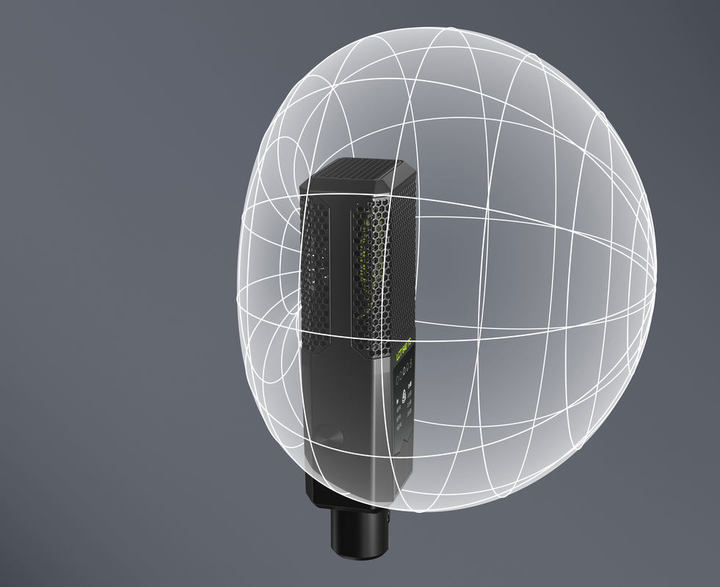
Cardioid mics have a focused pickup pattern, which means they are good for isolating the singer or instrument being mixed. The most commonly used polar pattern is 0° (cardioid). The cardioid pattern blends out a bad sounding room and other noises like a noisy fan in the background, etc.
Omnidirectional
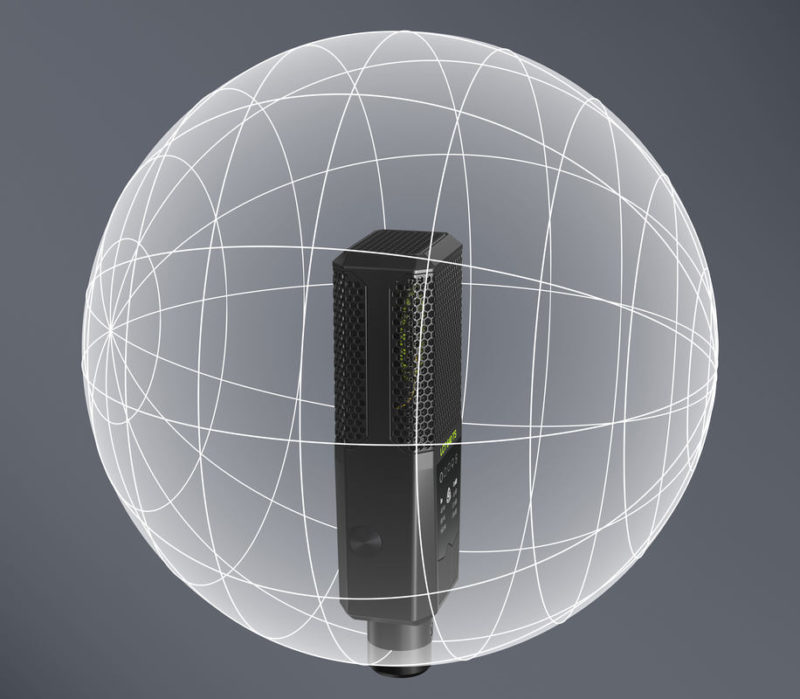
An omni microphone has a sensitivity that is the same for all directions. This pattern results in a bass response that is flat, and a frequency response that does not change based on the direction of the sound source. This pattern is also less sensitive to handling noise than any other polar pattern. The omni polar pattern picks up very high frequencies with greater directivity. This pattern used in a bad sounding room may result in an overall bad recording as it picks sounds from all directions.
2. Size of diaphragm
Condenser mic diaphragms come mainly in two sizes: large and small. Large-diaphragm condensers are almost always cardioid (i.e., you perform into the side of them). This design feature improves noise performance. Large diaphragms make the sound source appear larger and are ideal for recording vocals and other instruments.
Small diaphragm condensers are the most popular choice for recording today. They provide a natural, balanced sound with little to no coloration, you can use them to capture instruments as they sound. This makes them ideal for vocals, acoustic instruments and drum overheads. Because of their neutral sound, you can use high quality small diaphragm microphones for almost anything.
Large diaphragms are better at capturing lower frequencies whereas smaller diaphragms can better capture higher frequencies. So if you mainly want to record vocals or more bassy sounds then a large diaphragm is usually best. But if you want to capture a high pitched flute or violin then a small diaphragm is the best choice.
3. Frequency range
The frequency response of a microphone refers to the range of frequencies it picks up, from low to high. This range is measured by its lowest and highest frequencies, which are referred to as its frequency extremes. If you are looking for a microphone to use to record vocals, then you should go with one that has a frequency response range of around 80 Hz to 15 kHz. For recording instruments such as bass drums look for anything below 50Hz.
4. Sensitivity
The sensitivity of a microphone refers to the level of sound it can detect. This is expressed using different measurement systems, but generally the lower the number, the more sensitive the mic is. You should also check the SPL of the mic. SPL stands for sound pressure level and is expressed in decibels (dBs). SPL is used to describe the maximum volume that a mic can withstand.
5. Connectivity
Microphones are available in both wired and wireless formats. The choice totally depends on the type of usage. Wireless mics will be best for on stage usage where movement is necessary whereas in studios a wired one will do. As the condenser microphones are mostly used for recordings, you can just use a wired one.
6. Proximity Effect
Proximity effect is the exaggeration of low-frequency sounds in a directional microphone when the microphone is located very near the sound source. You can observe it when you are speaking into a directional mic that is too close to your mouth. It creates an unpleasant, mushy voice quality. The proximity effect can mess up the frequency response of a microphone. While you can use this anomaly to your advantage with some practice, it will still create problems of tonal balance.
If you need to completely avoid the proximity effect you can go for an omnidirectional microphone instead of a directional one.
1. AKG P120
The best affordable option!
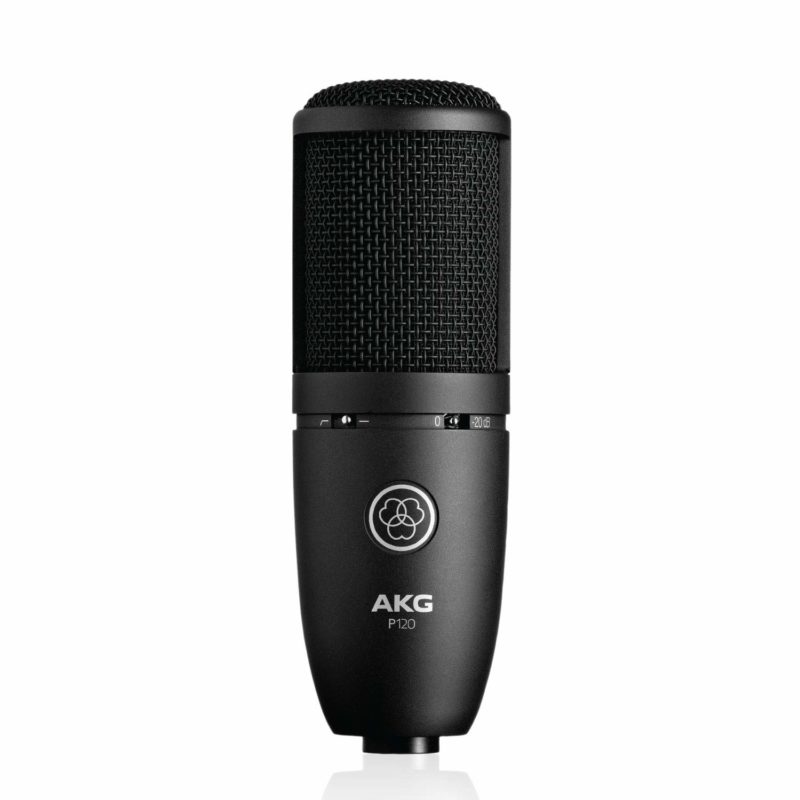
Diaphragm size: Small Pattern: Cardioid
Connector: XLR Connector Frequency response: 20hz to 20khz
Connectivity: Wired Price: ₹5,749.00
The AKG P120 Project Studio Condenser Microphone is one of the best affordable condenser microphones on the market. It comes from a line of top-notch studio microphones that are known for their exceptional sound and build quality. The fact that they can be bought at an affordable price makes them even more desirable. A lot of budget microphones aren’t as durable because of the poor electronics but AKG P120 stands the test.
It comes with an Attenuation Pad, which limits the input signal from loud sources and prevents overloading the electronics. This is extremely helpful when recording loud sources like drums or amplified instruments. On top of this, the rugged metal body of the mic offers a durable experience. The small diaphragm makes it great for recording vocals and acoustic instruments. The mics cardioid pattern allows for usage beyond just recording, you can even use it for streaming too. The overall shape, design and features make it a perfect choice for your studio.
Reasons to buy:
Great build quality with all metal body
Affordable price
Reasons to avoid:
Loud self-noise level
2. Audio Technica AT2020
A rugged mic for all needs!
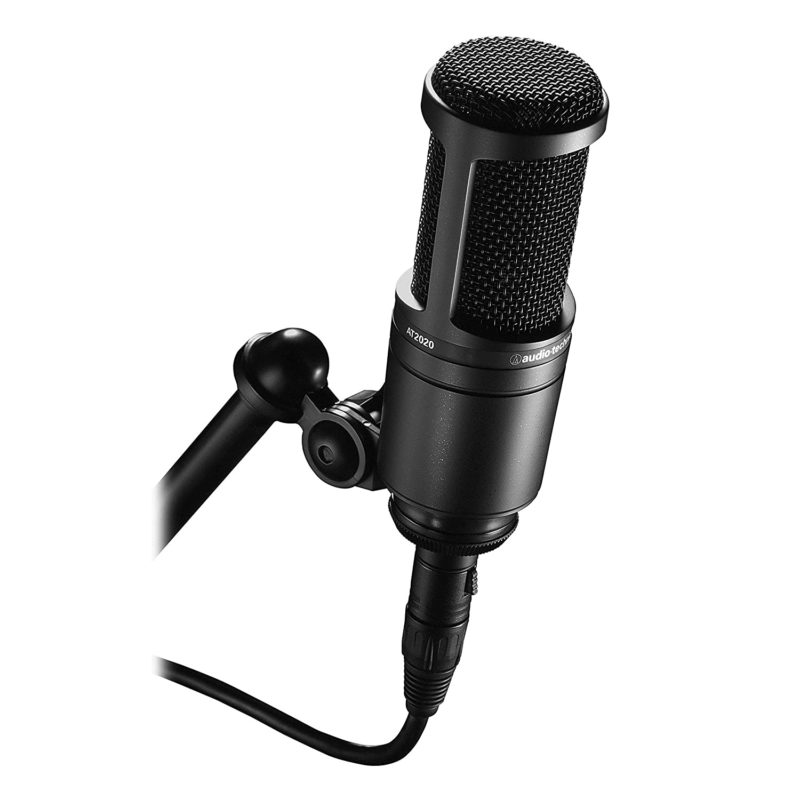
Diaphragm size: Small Pattern: Cardioid
Connector: XLR Connector Frequency response: 20hz to 20khz
Connectivity: Wired Price: ₹8,793
Audio-Technica’s AT2020 is a side address studio condenser microphone. This cardioid pattern, side address studio condenser microphone is designed for professional audio applications where superior sonic performance and rugged reliability are required. The AT2020 features a low-mass diaphragm that delivers an extended frequency response with superior transient response. The microphone has an all metal body with a metal grille as well, you can use it just anywhere without worrying about the wear and tear.
AT2020 also features a SPL of 144dB that means it can easily record loud sounds with minimum level of distortion. The microphone comes with a stand mount that can be pivoted to any position, this makes it easy to use in a variety of different environments. The cardioid pattern and excellent SPL levels make it perfect for studio use but it will excel on stage too thanks to its versatile mounting options!
Reasons to buy:
Versatile design and features
Great SPL level
All metal body
Reasons to avoid:
No XLR wire is provided; you’ll have to buy it separately.
3. AKG P220
A mic with high SPL levels!
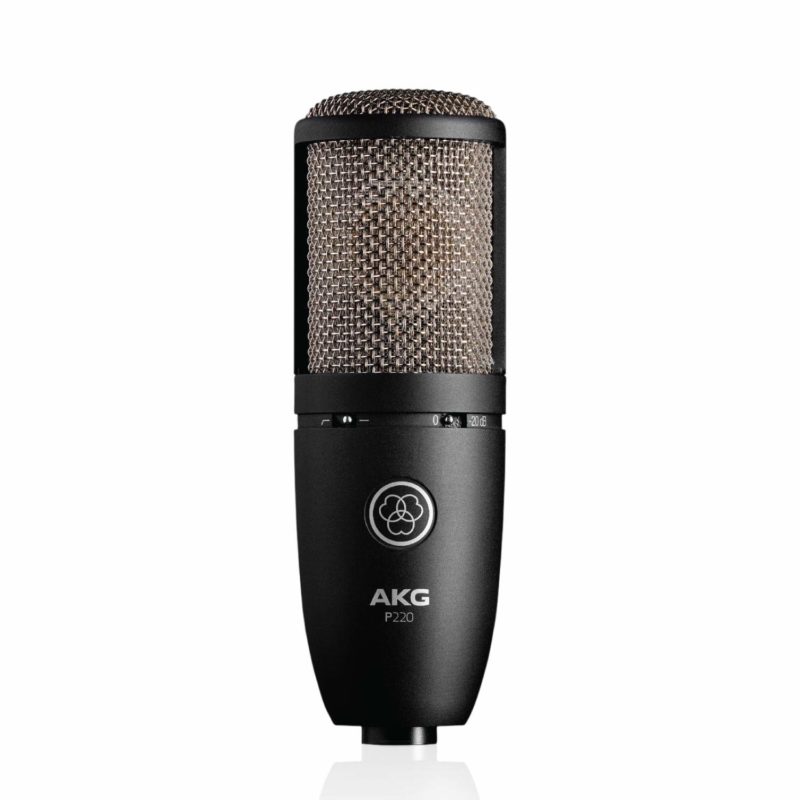
Diaphragm size: Large Pattern: Cardioid
Connector: 3 pin XLR Connector Frequency response: 20hz to 20khz
Connectivity: Wired Price: ₹8,999.00
The P220 is a large-diaphragm, cardioid condenser microphone with outstanding price-performance ratio. It offers a perfect balance between sound quality and price, making it attractive for recording instruments, voices and vocals. The capsule is made of hard metal – the same material used in professional studio microphones – ensuring optimum protection from mechanical shocks even under extreme conditions. It also comes with a spider shock mount that helps to reduce unwanted vibrations or noise while recording. The microphone will accommodate a high SPL of 155dB with its -20dB attenuation pad. It will eliminate any rumble or external unwanted noise with its bass-cut filter. This bass cut filter and the high SPL levels make it great for loud sounds.
Reasons to buy:
Great SPL levels
Good for loud sounds
Includes a spider shock mount
Reasons to avoid:
No XLR cable included
It is quite hefty
4. Audio Technica AT2035
Fit for stage and studio as well!
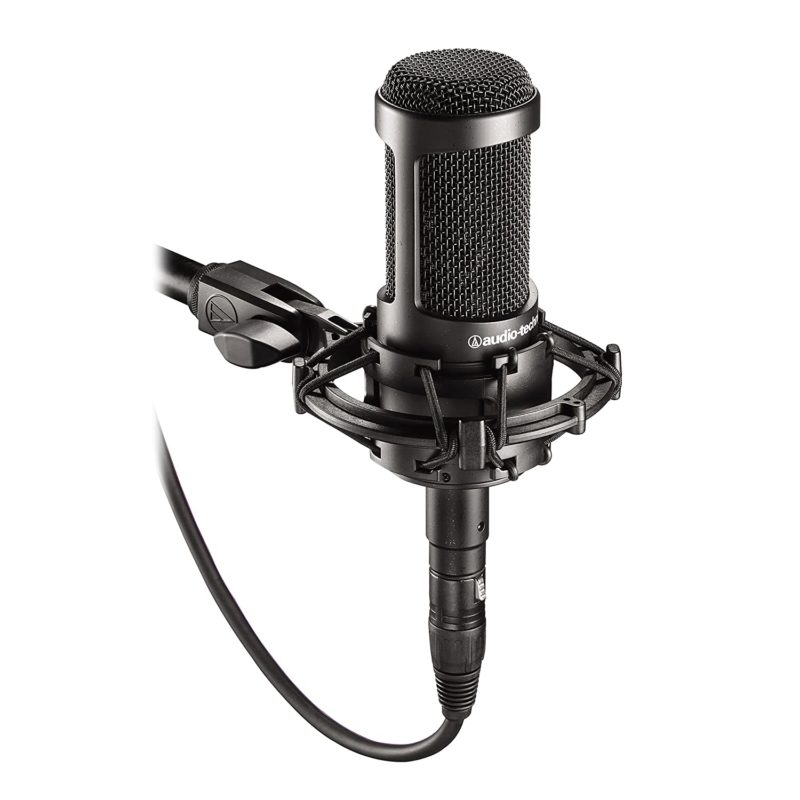
Diaphragm size: Large Pattern: Cardioid
Connector: 3 pin XLR Connector Frequency response: 20hz to 20khz
Connectivity: Wired Price: ₹8,999.00
Audio Technica AT2035 Large-Diaphragm Studio Condenser Microphone is an upgraded version of its predecessor, the highly acclaimed AT2020. The mic features a low-mass diaphragm that delivers an extended frequency response and increased sensitivity. It also has a switchable 80 Hz highpass filter and -10 dB pad to attenuate very high sound pressure levels (up to 137 dB SPL), providing maximum flexibility in any recording. The mic has high SPL levels of upto 158dB, so it can handle loud noises without distortion. As its predecessor AT2035 also has a rugged road ready body, so it can be used both on stage and in studio. The microphone also ships with a custom shock mount and a pouch.
Reasons to buy:
Low self noise
Includes a shock mount
High SPL levels
Switchable 80 Hz high pass filter
Reasons to avoid:
Does not include a XLR cable
5. RODE NT1A
Best seller since 2003!
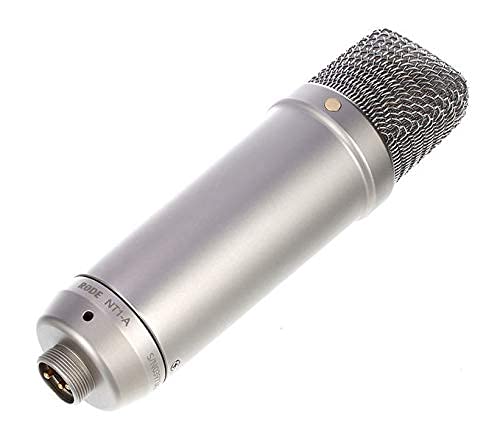
Diaphragm size: Large Pattern: Cardioid
Connector: 3 pin XLR Connector Frequency response: 20hz to 20khz
Connectivity: Wired Price: ₹20,499.00
The NT1A is RØDE’s most popular mic. It’s an industry standard vocal microphone for broadcast, podcasting and videography. The NT1A has been used to record vocals on over 50% of the Top 40 songs in the last 10 years.
RØDE NT1A is a high-quality large-diaphragm side address microphone with a cardioid directional characteristic. It has been designed to meet the rigorous demands of production and broadcast applications where accurate audio reproduction, low noise and extended frequency response are critical. It is well designed and has a sleek stainless steel construction that’s very tough. The microphone has only 5dB of self noise level and includes a premium shock mount with integrated pop filter and a high quality 6m (20’) XLR cable as well. The title of best seller is well earned the Rode NT1-A, every feature of this sleek mic makes it a perfect choice for all kinds of studio recordings!
Reasons to buy:
Premium all metal build
Low self noise levels
Includes a shock mount
Reasons to avoid:
Heavy due to all metal body
6. Blue Snowball iCE USB Mic
With a plug and play USB connection!
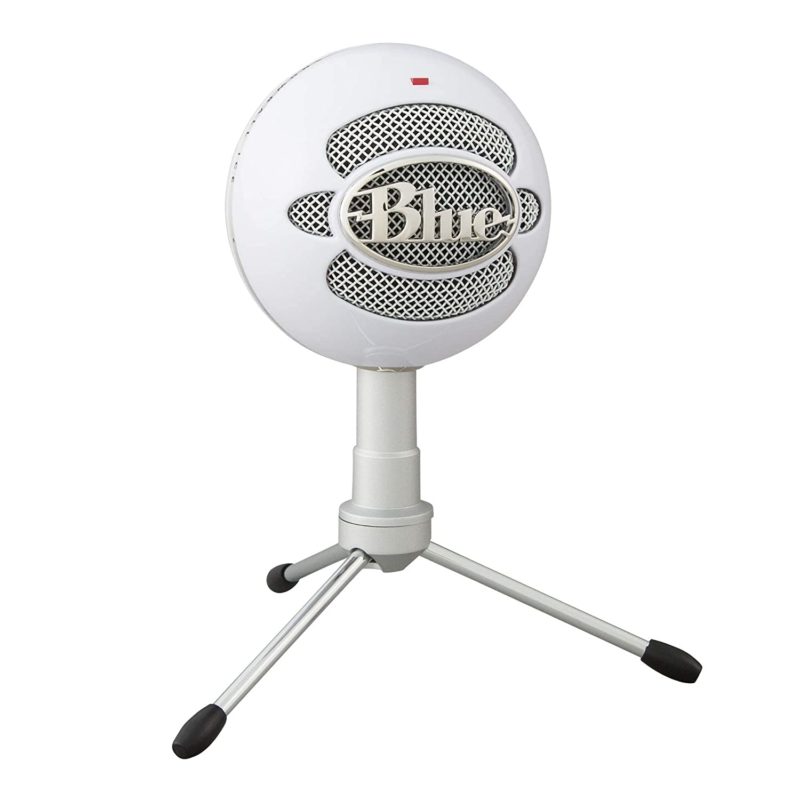
Diaphragm size: Large Pattern: Cardioid
Connector: USB Frequency response: 40Hz –18 kHz
Connectivity: Wired Price: ₹2,995.00
Blue Snowball iCE USB Mic is the improved version of Blue Snowball with enhanced features. The main selling point of this mic is its USB connectivity. Just plug it into your computer and you are good to go! You can use it for recording audio, voice-overs or even videos. It features an adjustable desktop stand and a durable metal casing, which makes it ideal for podcasting, voice-overs and field recording. The large diaphragm condenser capsule provides crystal clear audio quality. While the small frequency range sets it back when it comes to recording instruments, it still is a great choice for recording videos and vocals. Snowball ice is a perfect choice for streamers and youtubers as well. You can also go for the original snowball which has both cardioid and omni directional patterns. But it is priced slightly higher than the snowball ice.
Reasons to buy:
Plug and play USB connectivity
Great mic stand
Reasons to avoid:
Short frequency range
7. Behringer C-1 Studio Condenser Microphone
A mic with little to no distortion!
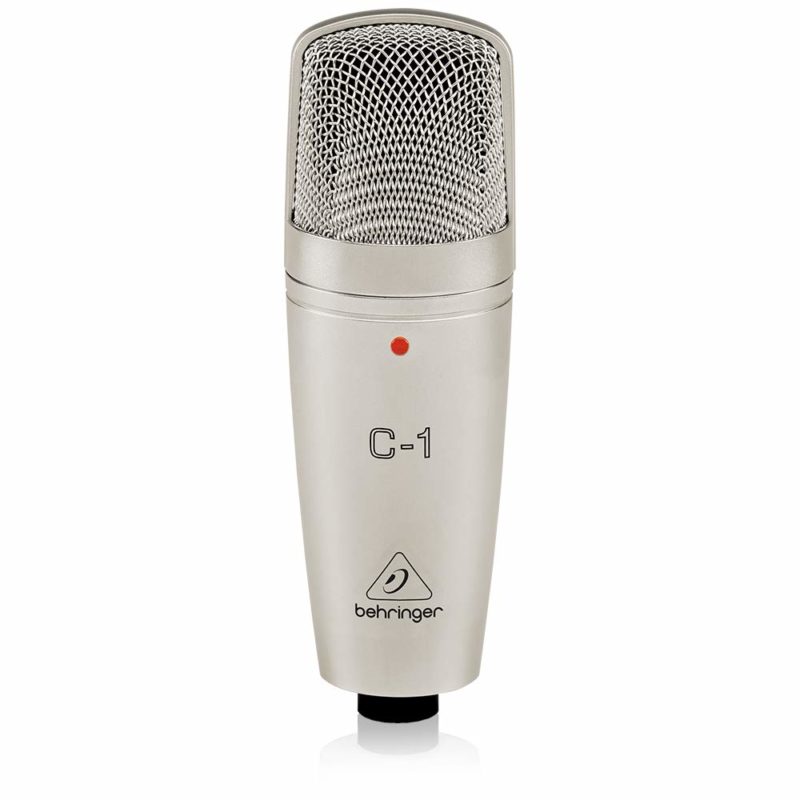
Diaphragm size: Large Pattern: Cardioid
Connector: XLR Connector Frequency response: 40 Hz – 20 kHz
Connectivity: Wired Price: ₹5,476.00
The C-1 is a large-diaphragm condenser microphone that delivers superior audio quality for voice and instruments. The C-1’s transformer less FET input circuit provides outstanding electrical performance and eliminates the harshness associated with capacitor microphones. The microphone has a large diaphragm capsule for excellent sensitivity and superior transient response. It also has a tough metal body that ensures safety while travelling or during rigorous recording marathons. The switchable 80 Hz high-pass filter can be used to reduce unwanted low frequency noise such as air conditioning rumble or mechanical vibration, which often plague the studios. Overall it’s a great affordable choice for studios and stage as well.
Reasons to buy:
Very low self noise
switchable 80 Hz high-pass filter
Reasons to avoid:
Doesn’t come with cables included
The microphone clip it comes in is a little flimsy
8. Maono AU-A04 Condenser Microphone Kit
An affordable recording kit!
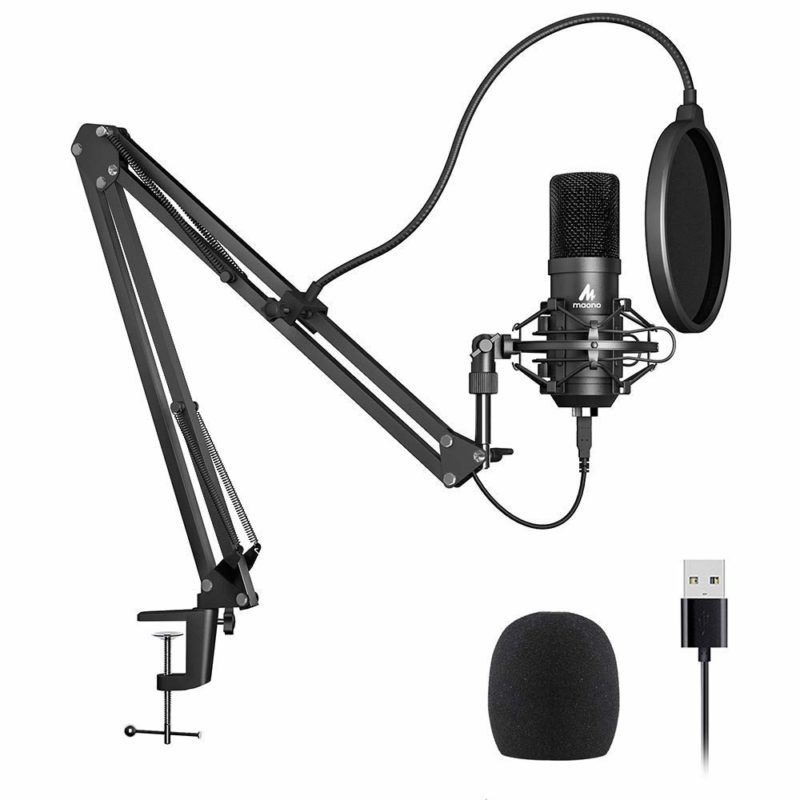
Diaphragm size: Large Pattern: Cardioid
Connector: USB Frequency response: 30 Hz – 16 kHz
Connectivity: Wired Price: ₹2,999.00
The AU-A04 is a perfect microphone for your home recordings, podcast, voiceovers and more. Maono AU-A04 is a condenser microphone with the internal high resolution sampling rate, it can record sound at 44.1KHz/16bit or 48KHz/16bit. With the USB 2.0 data port, it is easy to connect with your computer and you can do voice recording, podcasting and home recording without any fuss.
The microphone has an internal professional sound chipset with high resolution sampling rate, the versatility of this condenser microphone is more than ideal for your home or studio recording sessions. This microphone includes a foam windscreen and a pop filter for crystal clear sound recording. The shock mount holds the microphone steady with damping capability. If you’re looking for recording equipment that’s easy on your budget then Maono AU-A04 is perfect for you.
Reasons to buy:
A whole recording kit at an affordable price
Plug and play USB connectivity
Reasons to avoid:
The brackets and stand need extra care while moving around.
Frequently asked questions
1. Why is one pin of the XLR connector longer than the other two in my RODE mic?
This is completely intentional. The ground pin on an XLR connection is slightly longer than the other two pins. This is to ensure that when a microphone with an XLR connection is plugged into a mic input, it will make contact with the ground first. This helps protect against static electrical shocks which could damage the microphone’s circuitry. You will find this feature in all RØDE microphones.
2. Which microphone is best for streaming?
You can go for Blue Snowball iCE USB Mic or Maono AU-A04 Condenser Microphone Kit as both are very affordable and come with great utilities like stands which are necessary while streaming. The plug and play USB connection also allows you to set them up easily without any hassle.
3. Where should I place my microphone for singing?
To get a great sound when singing, you want to have your microphone about three inches away. The closer you get, the more likely you’ll notice the proximity effect. This leads to a lot of boominess and distortion.
4. How do I connect a XLR microphone to my computer to record?
In some circumstances, you can use a XLR to USB connector to connect your mic to your computer. While this might work for dynamic microphones, it might not always work for condenser mics.
A more reliable solution is to use an audio-interface like the RØDE AI-1, RØDECaster Pro or an adapter like Shure X2u which will act as the bridge to your computer for recording.
5. Are condenser microphones good for live stage performances?
Condenser mics are more sensitive and will pick up more handling noise and instrumentation on the vocal in spite of their cardioid pattern. A side address condenser microphone is a decent pick for live performances.
6. How do you connect a speaker to a condenser microphone?
You can do this by using an amplifier. The microphone needs some sort of power to work. Most mixers and acoustic amplifiers have “Phantom Power”, a 48 volt power feed that powers the condenser element in the microphone. You have to plug the mic needs into an amp with an XLR cable. The speaker goes into the output of the amp via a 1/4″ cable.
7. My condenser microphone requires phantom power, what product can I buy that will allow my microphone to work and connect to my laptop?
You can use an audio interface like the RØDE AI-1, RØDECaster Pro or an adapter like Shure X2u that will provide phantom power. Phantom power, in the context of professional audio equipment, is DC electric power transmitted through microphone cables to operate microphones that contain active electronic circuitry. It is best known as a convenient power source for condenser microphones, though many active direct boxes also use it.
The audio interface or the adapter will act as a bridge and will provide appropriate power to your microphone.
Conclusion
While there are plenty of condenser microphones in India available to buy, not all are created equal. The microphones listed above are the best ones available on the Indian market at the moment according to their price range and overall value for money. If you’re looking for a new microphone, you can use this selection as a reference point while shopping around.
Here’s a quick rundown of the best condenser microphones!
Go for AKG P120 as it works well for all your needs and is super affordable. If you want a high quality mic for studio use you can go for RODE NT1A, Rode NT1 has been an industry standard when it comes to recording audio. If you need a mic just for streaming and making youtube videos Maono AU-A04 Condenser Microphone Kit and Blue Snowball iCE USB Mic would be your best bet as both are affordable and come with great utilities.

